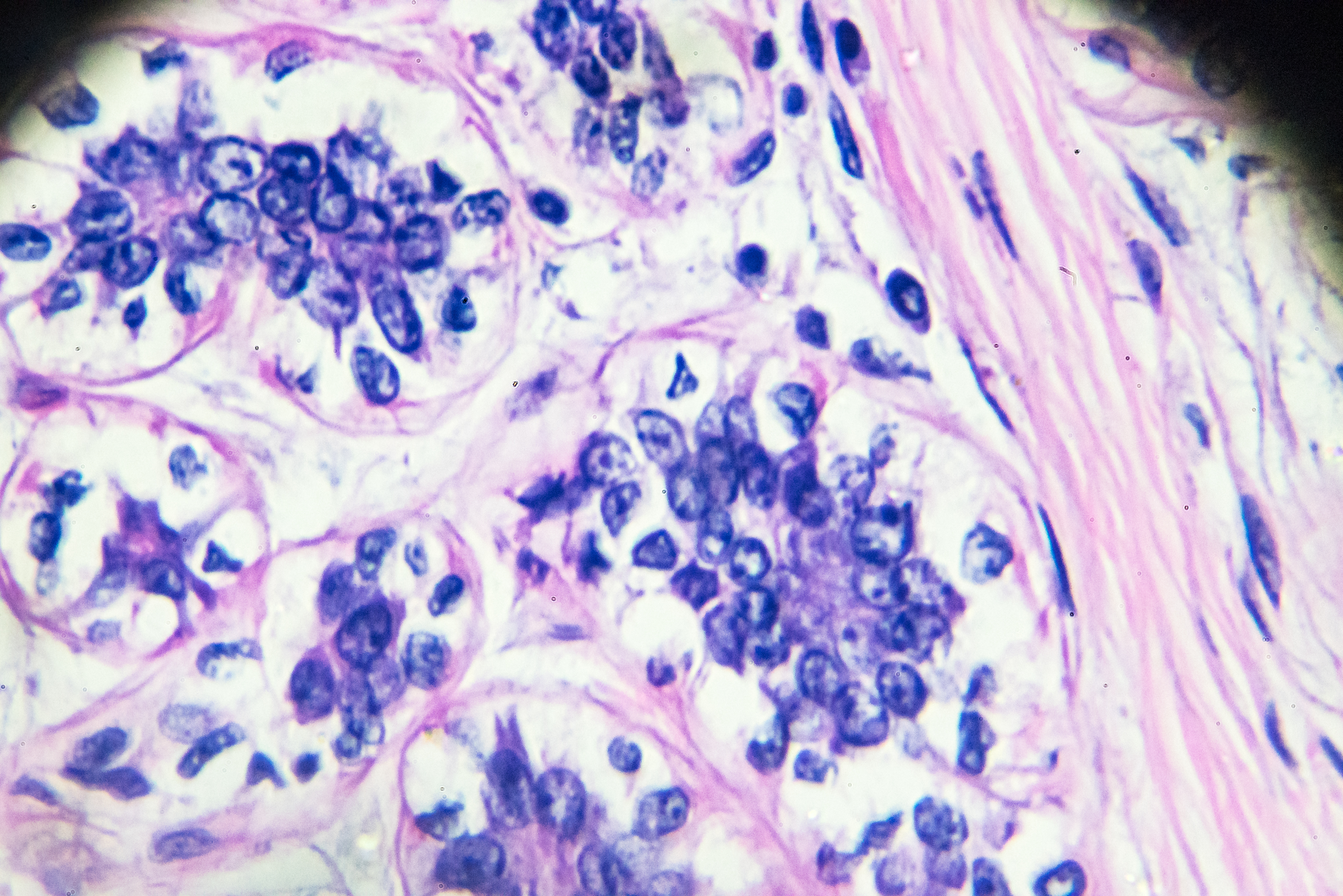CLOSE
About Elements
TANAKA is a leading company in the field of precious metals.
Advanced materials and solutions that support societal progress, the development stories behind them, the voices of engineers, and our management philosophy and vision—
Elements is an online media platform that shares insights that lead to a better society and a more prosperous future for the planet under the slogan “Mastering Precious Metals.”

Scientists develop 10-minute universal cancer test

Scientists have developed a universal cancer test that can detect traces of the disease in a patient’s bloodstream.
The cheap and simple test uses a colour-changing fluid to reveal the presence of malignant cells anywhere in the body and provides results in less than 10 minutes.
While the test is still in development, it draws on a radical new approach to cancer detection that could make routine screening for the disease a simple procedure for doctors.
“A major advantage of this technique is that it is very cheap and extremely simple to do, so it could be adopted in the clinic quite easily,” said Laura Carrascosa, a researcher at the University of Queensland.
The test has a sensitivity of about 90%, meaning it would detect about 90 in 100 cases of cancer. It would serve as an initial check for cancer, with doctors following up positive results with more focused investigations.
Related: Red tape preventing cancer patients from accessing new drugs
“Our technique could be a screening tool to inform clinicians that a patient may have a cancer, but they would require subsequent tests with other techniques to identify the cancer type and stage,” Carrascosa said.
The test was made possible by the Queensland team’s discovery that cancer DNA and normal DNA stick to metal surfaces in markedly different ways. This allowed them to develop a test that distinguishes between healthy cells and cancerous ones, even from the tiny traces of DNA that find their way into the bloodstream.
Healthy cells ensure they function properly by patterning their DNA with molecules called methyl groups. These work like volume controls, silencing genes that are not needed and turning up others that are. In cancer cells, this patterning is hijacked so that only genes that help the cancer grow are switched on. While the DNA inside normal cells has methyl groups dotted all over it, the DNA inside cancer cells is largely bare, with methyl groups found only in small clusters at specific locations.
Writing in the journal Nature Communications, the Queensland team described a series of tests that confirmed the telltale pattern of methyl groups in breast, prostate and colorectal cancer as well as lymphoma. They then showed that the patterns had a dramatic impact on the DNA’s chemistry, making normal and cancer DNA behave very differently in water. “This is a huge discovery that no one has grasped before,” said Carrascosa.
After a series of experiments, the scientists hit on the new test for cancer. The suspect DNA is added to water containing tiny gold nanoparticles. Though made of gold, the particles turn the water pink. If DNA from cancer cells is then added, it sticks to the nanoparticles in such a way that the water retains its original colour. But if DNA from healthy cells is added, the DNA binds to the particles differently, and turns the water blue. “The test is sensitive enough to detect very low levels of cancer DNA in the sample,” Carrascosa said.
Related: Brain cancer: drink that makes tumours glow could make surgery more effective
Led by Matt Trau, a professor of chemistry at the University of Queensland, the researchers have run the test on 200 human cancer samples and healthy DNA. “We certainly don’t know yet whether it’s the holy grail for all cancer diagnostics, but it looks really interesting as an incredibly simple universal marker for cancer, and as an accessible and inexpensive technology that doesn’t require complicated lab-based equipment like DNA sequencing,” Trau said.
The scientists are now working towards clinical trials with patients that have a broader range of cancer types than they have tested so far.
To test for cancer today, doctors must collect a tissue biopsy from a patient’s suspected tumour. The procedure is invasive and relies on the patient noticing a lump, or reporting symptoms that their GP recognises as a potential sign of cancer. A less invasive test that has the potential to spot cancer earlier could transform how patients are screened for the disease.
The DNA in cancer cells can be riddled with mutations that drive the growth of a specific tumour, but these mutations tend to differ depending on the type of cancer. A universal cancer test would not be precise enough to pinpoint the location or size of a tumour, but would give doctors a swift answer to the question: does this patient have cancer?
Tests in the lab showed that the scientists could distinguish normal DNA from cancer DNA by looking for a colour change in the gold particle solution that was visible to the naked eye within a few minutes.
“This test could be done in combination with other simple tests, and become a powerful diagnostic tool that could not just say that you have cancer, but also the type and stage,” said Carrascosa.
Ged Brady, of the Cancer Research UK Manchester Institute, said: “This approach represents an exciting step forward in detecting tumour DNA in blood samples and opens up the possibility of a generalised blood-based test to detect cancer. Further clinical studies are required to evaluate the full clinic potential of the method.”
This article was written by Ian Sample Science editor from The Guardian and was legally licensed through the NewsCred publisher network. Please direct all licensing questions to legal@newscred.com.
![]()







